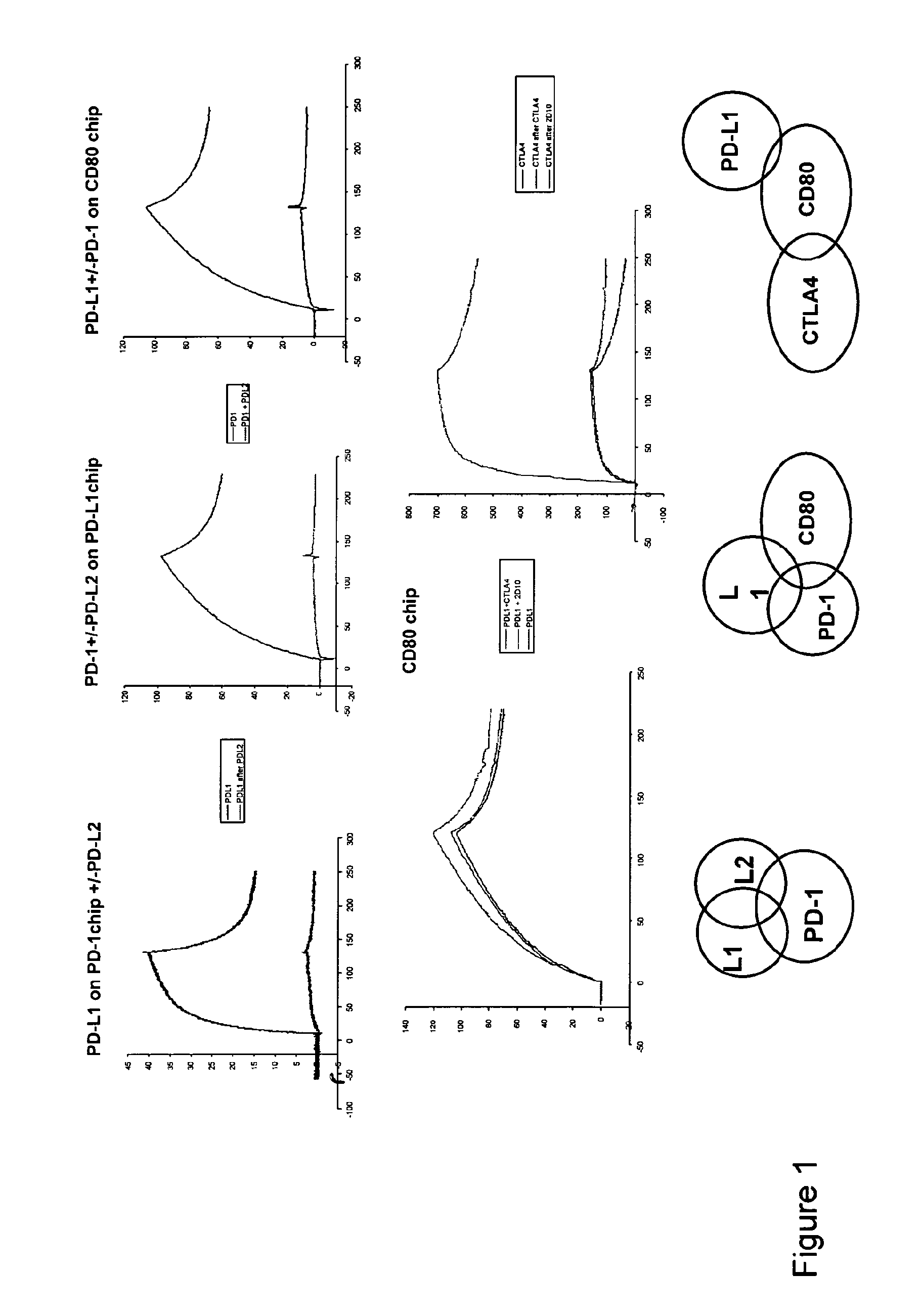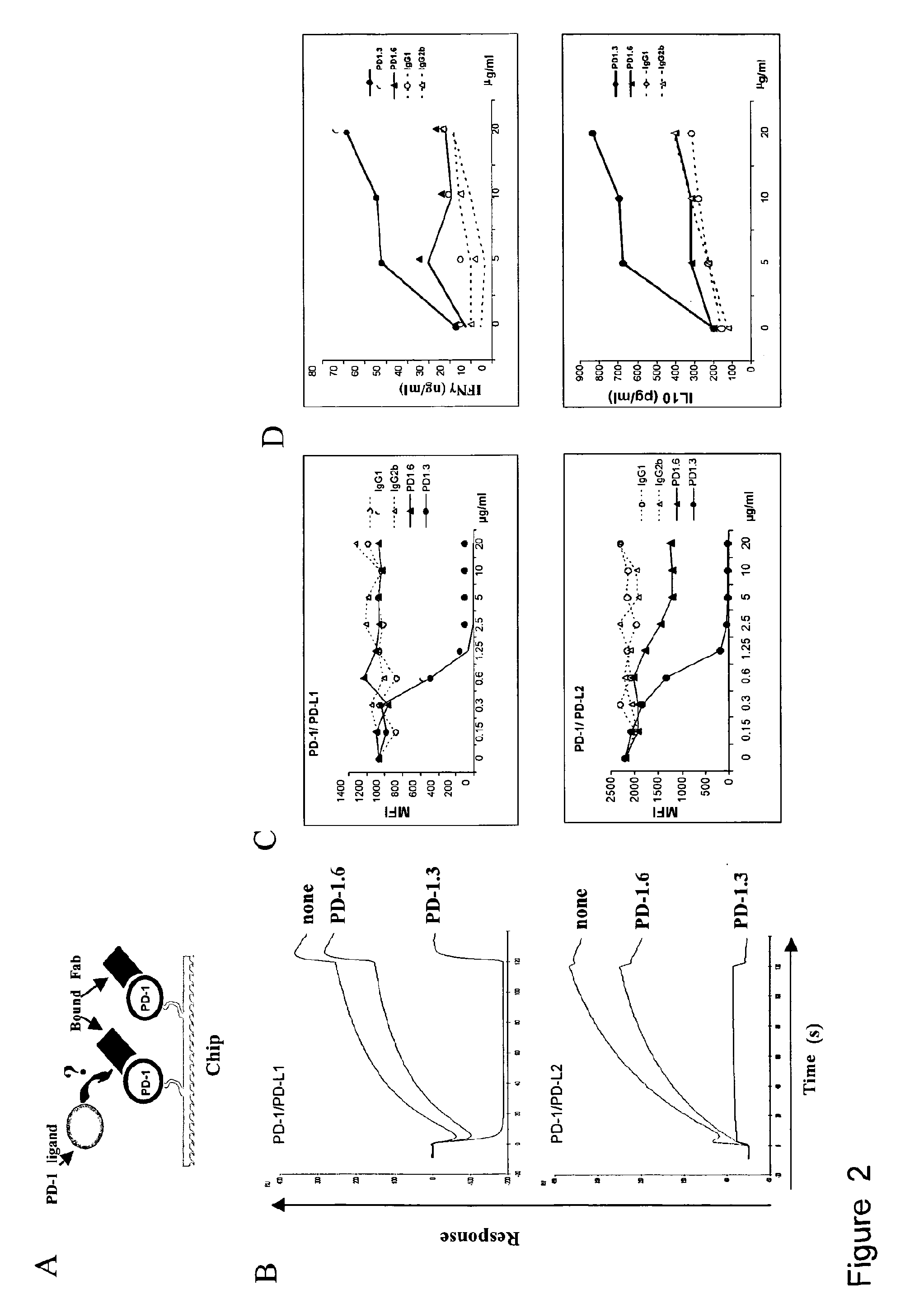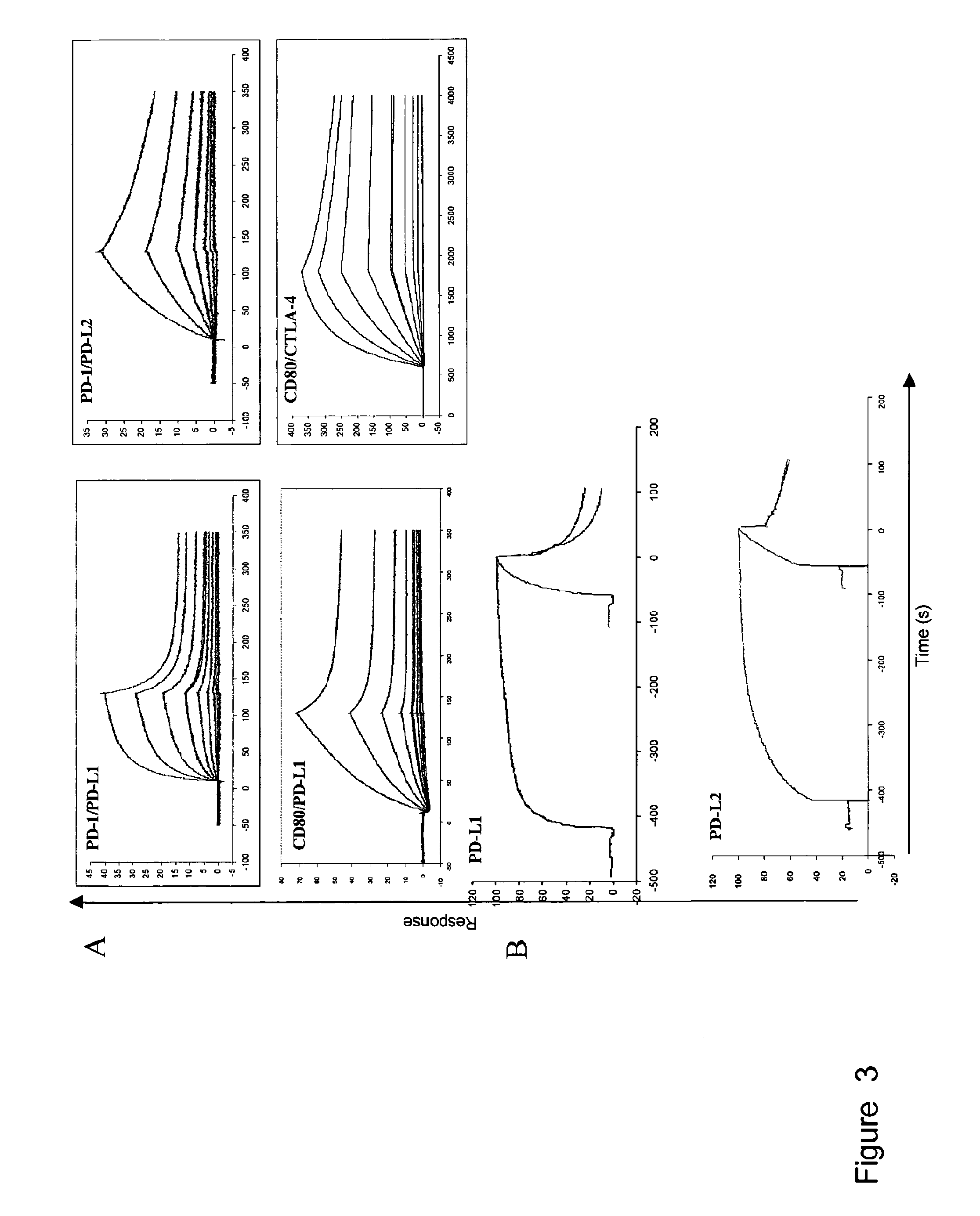PD-1 antibodies and PD-L1 antibodies and uses thereof
a technology of pd-1 antibodies and antibodies, which is applied in the field of pd-1 antibodies and pdl1 antibodies, can solve the problems of poor prognosis, no satisfactory approach has been proven to induce potent immune responses against vaccines, and methods have yet to be devised to overcome immunosuppressive mechanisms observed in cancer patients
- Summary
- Abstract
- Description
- Claims
- Application Information
AI Technical Summary
Benefits of technology
Problems solved by technology
Method used
Image
Examples
example
Abstract
[0171]The programmed death 1 molecule (PD-1) is involved in peripheral tolerance and in the regulation of persistent viral infections as well as a mechanism of tumor escape from the immune system. Two ligands, PD-L1 and PD-L2 have been described that differ in tissue distribution, regulation of expression and residues involved in their binding to PD-1. We have further investigated the molecular mechanisms of PD-1 interactions with its ligands using recombinant proteins and mAbs by surface plasmon resonance and cell surface binding. We could demonstrate that both PD-L1 and PD-L2 cross-compete for PD-1 binding. Interestingly and along the same line, one selected PD-1 mAb could interfere with the binding of both PD-L1 and PD-L2. PD-L1 and PD-L2 bound PD-1 with comparable affinities but striking differences standed at the level of the association and dissociation characteristics. Hence, PD-L1 but not PD-L2 had a delayed interaction reminiscent of a phenomenom of conformational t...
PUM
| Property | Measurement | Unit |
|---|---|---|
| diameters | aaaaa | aaaaa |
| flow rate | aaaaa | aaaaa |
| concentrations | aaaaa | aaaaa |
Abstract
Description
Claims
Application Information
 Login to View More
Login to View More - R&D
- Intellectual Property
- Life Sciences
- Materials
- Tech Scout
- Unparalleled Data Quality
- Higher Quality Content
- 60% Fewer Hallucinations
Browse by: Latest US Patents, China's latest patents, Technical Efficacy Thesaurus, Application Domain, Technology Topic, Popular Technical Reports.
© 2025 PatSnap. All rights reserved.Legal|Privacy policy|Modern Slavery Act Transparency Statement|Sitemap|About US| Contact US: help@patsnap.com



